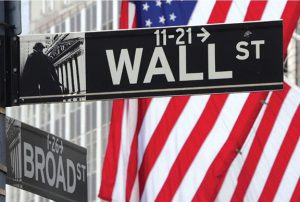Bloomberg
The worst year for equity bulls since 2008 will also be remembered as one when the predominant investment strategies veered from one another by the most in two decades.
Divergent fortunes befell the most famous US stock benchmarks, with the S&P 500’s annual loss of almost 20% more than twice that of the Dow Jones Industrial
Average. A more precise comparison involves style categories — value and growth — with the latter trailing the former by a factor of 3 and losing to it in percentage terms by the most since 2000.
It’s been a refrain of quantitative bulls for years: value was due for a win. In 2022, it happened due to a confluence of anti-growth forces ranging from rising bond yields to a tightening Federal Reserve.
Doing well in 2022 came down to a single decision in terms of portfolio construction: immunise yourself from interest-rate sensitivity. It was a request fielded by Mahmood Noorani, the chief executive of London-based analytics research firm Quant Insight, about a year ago from a client worried about growth and credit risk. At Noorani’s behest, the portfolio manager trimmed once-hot names like Meta Platforms Inc and PayPal Holdings Inc by 25%, and raised by the same amount in firms such as Coca-Cola Co and Shell Plc.
Four months later, the shuffling paid off: an improvement of 4 percentage points in returns over what would’ve happened if no such tweaks were executed.
The case study highlights the main theme of 2022: When the path of inflation and Fed policy becomes the overarching force of the market, everyone becomes a macro trader. Heeding big economic trends may again overshadow stock picks in the New Year as China just removed the last of its Covid curbs while recession debate heat up in the US.
Money managers “ultimately accept that the world we are in means that if they want to hold onto their single-stock alpha and all the fundamental research they do, then macro comes along and blows them of course more and more regularly,†Noorani said in an interview. “In order to get through these macro periods so they can actually harvest that alpha, they need to be macro aware.â€
With inflation and Fed policy dominating news flows, investors contended with an all-or-nothing market where fundamentals of individual firms retreat to the backseat.
In this rates-obsessed world, one notable pattern emerged: Stocks moved in tandem with Treasuries and against the US dollar. In fact, that happened for 28 different weeks this year, a frequency not seen since at least 1973.
 The Gulf Time Newspaper One of the finest business newspapers in the UAE brought to you by our professional writers and editors.
The Gulf Time Newspaper One of the finest business newspapers in the UAE brought to you by our professional writers and editors.
